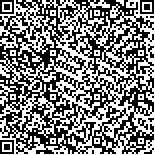| 引用本文: | 李霞,刘建国,董雁冰,吴杰,刘浩.W波段毫米波晴空大气传输特性[J].哈尔滨工业大学学报,2019,51(9):43.DOI:10.11918/j.issn.0367-6234.201806035 |
| LI Xia,LIU Jianguo,DONG Yanbing,WU Jie,LIU Hao.Transmission characteristics of W-band millimeter wave in the clear atmosphere[J].Journal of Harbin Institute of Technology,2019,51(9):43.DOI:10.11918/j.issn.0367-6234.201806035 |
|
| |
|
|
| 本文已被:浏览 1814次 下载 714次 |

码上扫一扫! |
|
|
| W波段毫米波晴空大气传输特性 |
|
李霞1,2,3,刘建国1,2,董雁冰3,吴杰3,刘浩3
|
|
(1.中国科学院 安徽光学精密机械研究所,合肥 230031; 2.中国科学技术大学 科学岛分院, 合肥 230026; 3.光学辐射重点实验室, 北京100854)
|
|
| 摘要: |
| 为考察晴空大气对毫米波信号的衰减作用,基于大气分子吸收光谱参数数据库hitran2008,分析大气中对毫米波有吸收贡献的主要气体,采用Gross动力线型对分子谱线在远翼区的吸收进行精细建模计算,以逐线气体辐射计算方法计算水汽、氧气、臭氧等6种主要吸收气体的物性参数以及吸收光谱,分析均匀路径、非均匀路径大气对毫米波的衰减作用,并将逐线计算方法与Liebe模型方法的计算结果进行比对,结果表明二者符合较好. 此外,将理论计算数据与94 GHz测试系统的测量数据进行对比,最大相对偏差为3.7%,进而验证模型的正确性. 结果表明:在75~110 GHz毫米波段,水汽、氧气对毫米波信号衰减强烈,占总气体衰减的95%以上,毫米波信号在20 km左右高度水平传输时,需要考虑臭氧对信号的衰减作用,甲烷、一氧化碳、一氧化二氮对信号的衰减可忽略不计. 研究结果可为毫米波雷达参数设计等工程应用提供参考. |
| 关键词: 毫米波 大气传输 逐线法 水汽 臭氧 |
| DOI:10.11918/j.issn.0367-6234.201806035 |
| 分类号:TN211 |
| 文献标识码:A |
| 基金项目: |
|
| Transmission characteristics of W-band millimeter wave in the clear atmosphere |
|
LI Xia1,2,3,LIU Jianguo1,2,DONG Yanbing3,WU Jie3,LIU Hao3
|
|
(1.Anhui Institute of Optics and Fine Mechanics, Chinese Academy of Sciences, Hefei 230031, China; 2. Branch School of Science Island,University of Science and Technology of China, Hefei 230026, China; 3. Science and Technology on Optical Radiation Laboratory, Beijing 100854, China)
|
| Abstract: |
| In order to investigate the attenuation effect of clear atmosphere on millimeter wave signals, the gases contributing the most to millimeter wave absorption in the atmosphere were analyzed based on HITRAN 2008 database of atmospheric molecular absorption spectroscopy parameters. A fine calculation model of the absorption of molecular spectral lines in the far wing was obtained by utilizing the Gross dynamic line. Based on this model, the physical property parameters and absorption spectrum of 6 primary absorbing gases including H2O, O2, and O3 were calculated using the Line by Line method. Then, attenuation effects of atmosphere on millimeter wave were analyzed in both homogeneous and inhomogeneous path, respectively. Results calculated by the Line-by-Line method agreed well with the results calculated by the Liebe model method. In addition, compared with 94 GHz test system measurement data, the relative deviation was 3.7%. H2O and O2 strongly attenuated the millimeter wave signal in the 75-110 GHz millimeter wave band, accounting for more than 95% of the total gas attenuation. When the millimeter wave signal was transmitted horizontally at about 20 km, the attenuated effect of O3 on the signal should be considered, and the attenuated effect of CH4, CO, N2O was negligible. The research results can provide reference for the engineering application of millimeter wave radar parameter design. |
| Key words: millimeter wave atmosphere transmission the Line-by-Line method H2O O3 |
|
|
|
|







